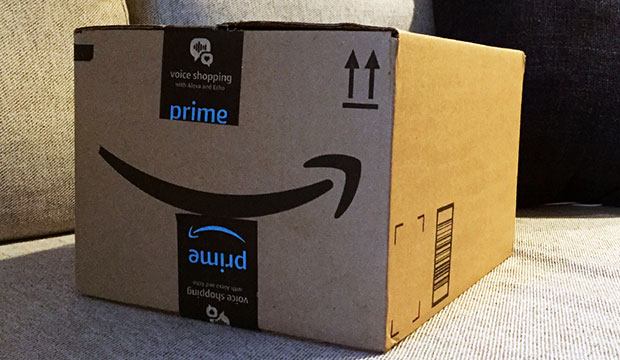Amazon third-party sellers will not be able to ship Prime customers’ orders using FedEx Ground and FedEx Home, as of Wednesday.
“We have seen a drop in the delivery performance of FedEx Ground and FedEx Home ship methods for Seller Fulfilled Prime shipments,” Amazon told sellers in a note provided to the E-Commerce Times by corporate communications manager Patrick Graham.
The restriction is temporary, Amazon said, although no exact date has been set for resuming FedEx Ground and FedEx Home shipments for Prime orders.
“Our understanding is FedEx Ground will again be an option for Prime shipments post-peak,” FedEx spokesperson Isabel Rollison said.
The restriction will only have a “nominal impact” on FedEx’s peak volumes, she told the E-Commerce Times, but it “limits the ability of small businesses to manage their business on some of the highest-demand shipping days in history.”
Sellers will have to select an alternative shipping method for Prime orders, or turn off their Prime badge if they cannot do so.
They can continue to ship Prime orders through FedEx Express, which is more expensive.
However, “less than 2 percent of the population will have to pay more,” observed Ray Wang, principal analyst at Constellation Research.
FedEx Ground and FedEx Home will continue to be available for standard shipments.
“We want to ensure customers receive their packages on time, and are managing cutoffs for delivery by Christmas,” Amazon said. Managing cutoffs “happens regularly during holiday seasons.”
The restrictions will “cause a great deal of pain and expense for third-party sellers on Amazon in the short term,” said Constellation Research Principal Analyst Nicole France. “I think we’ll see every available shipping alternative used in order to manage the holiday rush.”
Possible Signs of Change
Sellers who can leave Amazon will, France told the E-Commerce Times. “For those who can’t, [this move] softens the field for moving to Amazon’s own shipping network.”
Amazon may be clearing the decks for an expansion of its own delivery service.
The company plans to do more shipping itself, suggested Constellation’s Wang.
“They used a service level and quality dispute as an excuse to send a message to FedEx. They believe they can deliver their packages faster and cheaper than FedEx,” he told the E-Commerce Times.
“It seems clear that the major motivation is to open the door for Amazon’s own shipping capabilities over the medium to long term,” said Constellation’s France.
Amazon began expanding its delivery network in May to offer one-day delivery, a battleground where WalMart and Target offer stiff competition.
The company “is going to try to upend everything with their own network and their own delivery,” predicted Liz Miller, principal analyst at Constellation Research.
“They want to add services like taking a photo of where a package was left, for instance, to prove to the end recipient where and when a package was delivered, and to cover liability with the seller,” she told the E-Commerce Times.
Amazon’s Delivery Network Issues
Amazon’s delivery network has been beset by problems, however.
For one thing, safety and security procedures are lax, according to an NBC News report.
Drivers who have not passed background checks sometimes use company badges with someone else’s name and photo on them, while some drivers don’t even bother with badges, NBC said. Contractors have been involved in road accidents, resulting in serious injury or death, in some cases blamed on reckless driving to meet delivery deadlines.
The rate of serious injuries is more than double the national average for the industry.
These are growing pains, Constellation’s Wang suggested.
“Amazon is preparing to deliver on its own network and will do it more cheaply than competitors,” he said. “Amazon has broken the duopoly in shipping with FedEx and UPS. Expect them to cut into both carriers’ business.”
FedEx Sitting Pretty
Amazon’s shipping restriction might benefit FedEx, which already is viewed as the overnight shipping leader, Constellation’s Miller pointed out.
“They want to cut their operational losses in these volume areas where a premium can’t be added to keep margins sitting pretty,” she said.
FedEx “will compensate for the revenue lost with picking up services, as WalMart continues to try to take pieces of Amazon’s lunch,” Miller predicted.
FedEx earlier this year expanded its pick-up and drop-off points partnership with Dollar General to add 1,500 Dollar General Stores. That will grow to a total of 8,000 by the end of next year.
There’s speculation FedEx might use the breakup with Amazon to offer its services to other companies, such as Target and Walmart.
FedEx earlier this year announced that it wouldn’t renew an air shipping deal with Amazon, and this summer declined to renew a ground delivery contract with Amazon.
“I suspect FedEx anticipated the potential for Amazon to make the move it did,” Miller said. “A wide range of technology capabilities present new opportunities for FedEx to streamline and reshape its operations.”
The Real Winner
UPS, which already has a partnership with Amazon, might benefit from the restriction on Prime shipping for this season.
“UPS is happy to have Amazon’s volume,” Wang said.
However, the United States Postal Service might be the greatest beneficiary.
“Package business is up,” France said. “They have agreements directly with retailers and agreements with the big two — UPS and FedEx — to serve as last mile carriers for local service.”
The Postal Service is moving into omnichannel engagements like the “Informed Delivery” service,” she observed. “They are trying to become part of the engagement value chain and not just be the shipper.”













































